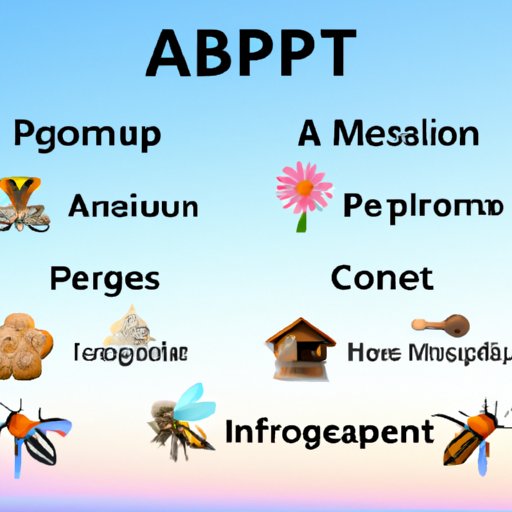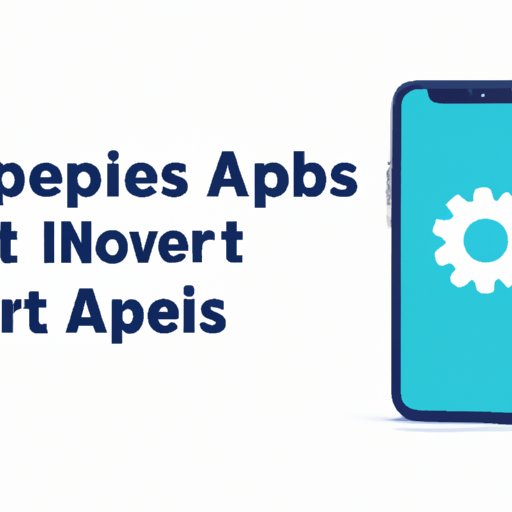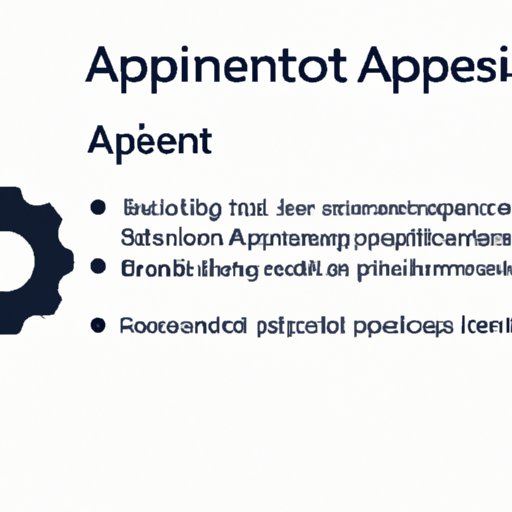Introduction
An application programming interface (API) is a set of protocols and routines that allow two programs or components to communicate with each other. APIs enable developers to access system data and functions, as well as create applications that integrate with existing systems. APIs are essential to many web services, mobile applications, and other software products.
In this article, we’ll explore how an API works and its various types, uses, and applications. We’ll also provide a detailed overview of the process of making an API call, common terms used in APIs, real-world examples, recent trends, and security considerations when developing an API.

Types of APIs and Their Uses
There are several different types of APIs, each with its own purpose and use cases:
REST APIs
Representational State Transfer (REST) APIs are the most commonly used type of API. REST APIs use HTTP requests (GET, POST, PUT, DELETE) to manage and manipulate data. They often return data in JSON or XML format, which makes them easy to work with. REST APIs are used in many web applications, including social media sites, e-commerce stores, and online marketplaces.
SOAP APIs
Simple Object Access Protocol (SOAP) APIs are based on the WSDL (Web Services Description Language) standard. They use XML for data exchange, and require authentication for each request. SOAP APIs are often used in enterprise-level applications such as financial management systems and customer relationship management (CRM) platforms.
Webhooks
Webhooks are event-driven APIs that can be used to trigger actions when certain events occur. For example, if you have an app that sends notifications when new blog posts are published, you could use a webhook to trigger a notification whenever a new post is added to your blog. Webhooks are often used in collaboration and communication tools.
GraphQL
GraphQL is a query language for APIs that was developed by Facebook. It allows developers to request data from multiple sources in one request, and get only the data they need. This makes it more efficient than traditional REST APIs, which typically return all of the data associated with a request. GraphQL is often used in content management systems and mobile applications.
Making an API Call
Making an API call is a straightforward process. To make a successful API call, you must first identify the API you want to use, then follow these steps:
Requesting Data
The first step in making an API call is to create a request. This involves specifying the URL, method (GET, POST, PUT, DELETE), and parameters (if applicable). Depending on the API, you may also need to specify the data format (e.g. JSON, XML).
Authentication
Once you’ve created the request, you must authenticate it. This is done by providing credentials such as an API key or token. The authentication process varies depending on the API.
Response Formatting
Finally, once the request has been authenticated, the response is formatted and returned. Depending on the API, the response may be in JSON, XML, HTML, or some other data format. The response typically contains the requested data and/or a status code indicating whether the request was successful.
Common Terms Used in APIs
When working with APIs, there are a few common terms you should be familiar with:
Endpoints
An endpoint is a URL that an API call is made to. Each endpoint is associated with a specific function or operation, such as retrieving data or creating an object.
Resources
A resource is an individual item or collection of items that can be accessed via an API call. Examples of resources include users, posts, comments, images, etc.
Parameters
Parameters are values that can be passed to an API call to specify the data to be retrieved or manipulated. These can include filters, sorting options, pagination details, and other options.
Status Codes
Status codes are numerical codes that indicate the success or failure of an API call. Common status codes include 200 (success), 400 (bad request), 401 (unauthorized), 404 (not found), and 500 (server error).
Real-World Examples of Popular APIs
Many of the world’s most popular websites and applications rely on APIs to provide features and functionality. Here are a few examples:
Google Maps API
The Google Maps API enables developers to embed Google Maps into their websites and applications. The API can be used to display maps, get directions, calculate distances, and much more.
Twitter API
The Twitter API allows developers to access user data, post tweets, search for tweets, and more. It is used by many popular applications, such as social media monitoring tools and analytics platforms.
Stripe API
The Stripe API is a payment processing platform that enables developers to accept payments in their applications. It supports a variety of payment methods, including credit cards, Apple Pay, and Bitcoin.

Recent Trends in the API Marketplace
The API marketplace is constantly evolving, and new trends are emerging all the time. Here are a few of the most notable trends:
Open Source APIs
Open source APIs are becoming increasingly popular. These APIs are free to use and are usually more flexible than commercial APIs. Some popular open source APIs include the WordPress REST API and the GitHub API.
Platform as a Service (PaaS)
Platform as a service (PaaS) is a cloud computing model that enables developers to create, deploy, and manage applications without having to manage the underlying infrastructure. This makes it easier for developers to create, deploy, and maintain applications using APIs.
Serverless Computing
Serverless computing is a cloud computing model that allows developers to run code without having to manage servers. This makes it easier to build applications that rely on APIs, since all of the server management is handled by the cloud provider.

Security Considerations When Developing an API
When developing an API, it’s important to consider security. APIs can be vulnerable to malicious attacks, so it’s important to take steps to protect them. Here are a few security considerations to keep in mind:
Encryption
Encrypting data is an important step in securing an API. Encryption ensures that data is protected from unauthorized access. When transmitting data, use secure protocols such as HTTPS to ensure that the data is encrypted.
Authorization
When designing an API, it’s important to consider who should have access to the data. Use authorization mechanisms such as OAuth to ensure that only authorized users can access data.
Access Control
Access control ensures that users can only access the data they’re authorized to view. Use Role-based Access Control (RBAC) or Attribute-based Access Control (ABAC) to restrict access to data.
Conclusion
An API is a set of protocols and routines that allow two programs or components to communicate with each other. APIs enable developers to access system data and functions, as well as create applications that integrate with existing systems. There are several different types of APIs, each with its own purpose and use cases. Making an API call is a straightforward process, and there are a few common terms you should be familiar with when working with APIs. Additionally, many of the world’s most popular websites and applications rely on APIs, and the API marketplace is constantly evolving. Finally, it’s important to consider security when developing an API, as APIs can be vulnerable to malicious attacks.
Understanding how an API works is essential for anyone working in the software development industry. With this knowledge, you’ll be able to create powerful applications that leverage existing systems and data sources.
(Note: Is this article not meeting your expectations? Do you have knowledge or insights to share? Unlock new opportunities and expand your reach by joining our authors team. Click Registration to join us and share your expertise with our readers.)
